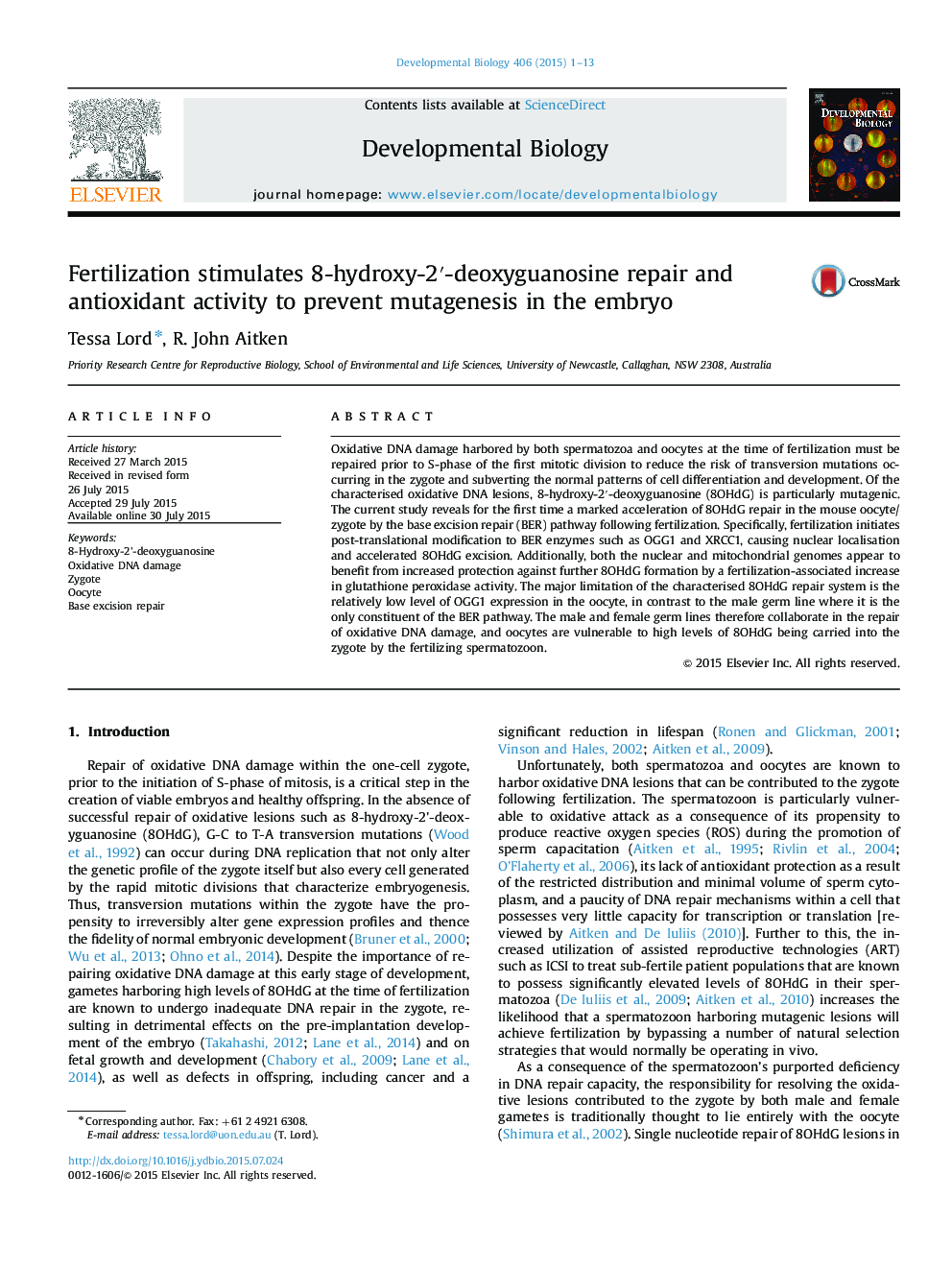| کد مقاله | کد نشریه | سال انتشار | مقاله انگلیسی | نسخه تمام متن |
|---|---|---|---|---|
| 2172872 | 1093637 | 2015 | 13 صفحه PDF | دانلود رایگان |

• The oocyte accelerates repair of oxidative DNA damage post-fertilization.
• Post-translational modifications of BER enzymes orchestrate zygotic 8OHdG repair.
• Fertilization stimulates an increase in antioxidant protection within the oocyte.
• OGG1 is under expressed in the zygote lending to vulnerability to mutagenesiss.
Oxidative DNA damage harbored by both spermatozoa and oocytes at the time of fertilization must be repaired prior to S-phase of the first mitotic division to reduce the risk of transversion mutations occurring in the zygote and subverting the normal patterns of cell differentiation and development. Of the characterised oxidative DNA lesions, 8-hydroxy-2′-deoxyguanosine (8OHdG) is particularly mutagenic. The current study reveals for the first time a marked acceleration of 8OHdG repair in the mouse oocyte/zygote by the base excision repair (BER) pathway following fertilization. Specifically, fertilization initiates post-translational modification to BER enzymes such as OGG1 and XRCC1, causing nuclear localisation and accelerated 8OHdG excision. Additionally, both the nuclear and mitochondrial genomes appear to benefit from increased protection against further 8OHdG formation by a fertilization-associated increase in glutathione peroxidase activity. The major limitation of the characterised 8OHdG repair system is the relatively low level of OGG1 expression in the oocyte, in contrast to the male germ line where it is the only constituent of the BER pathway. The male and female germ lines therefore collaborate in the repair of oxidative DNA damage, and oocytes are vulnerable to high levels of 8OHdG being carried into the zygote by the fertilizing spermatozoon.
Journal: Developmental Biology - Volume 406, Issue 1, 1 October 2015, Pages 1–13